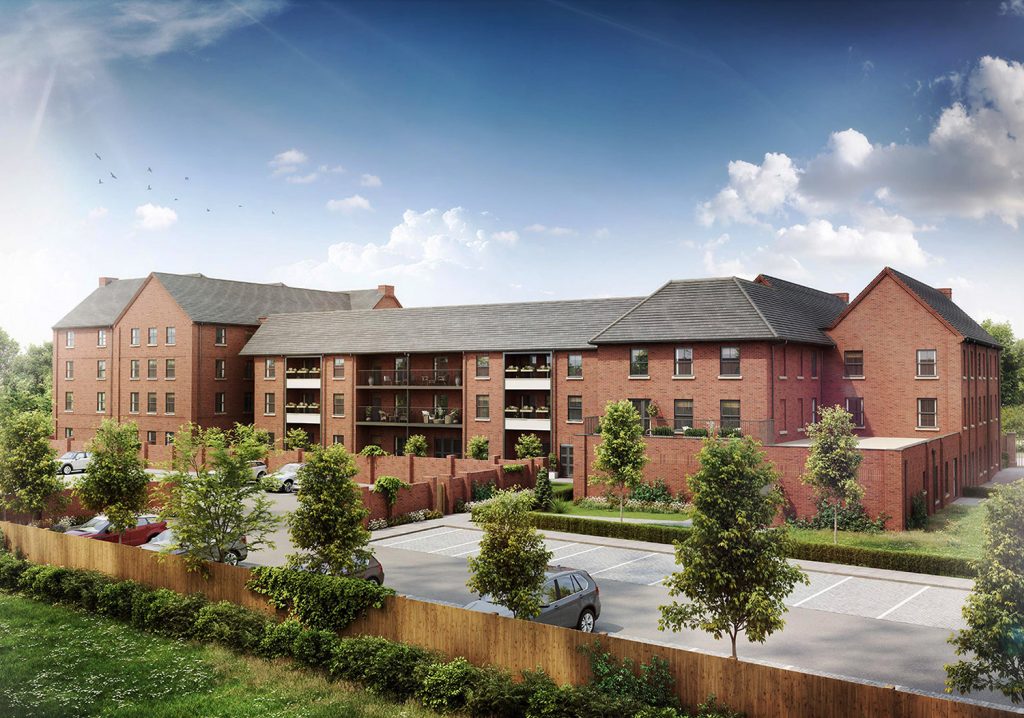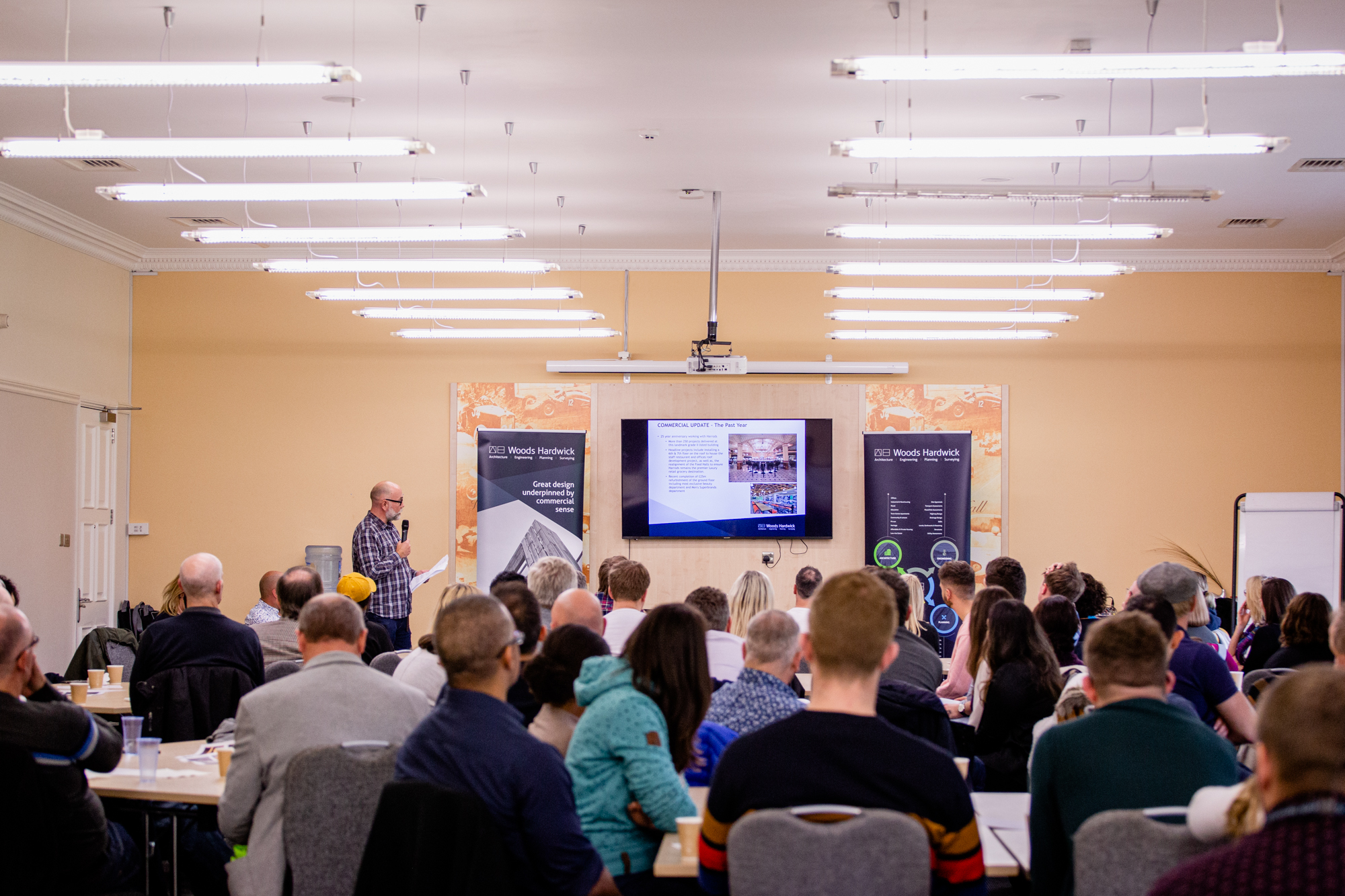
How to become an Architect – navigating the 3 step RIBA process
Diane Cox is a Chartered Architect in Woods Hardwick’s Commercial Architecture team. Here she talks us through the three step RIBA process to becoming an architect. Yes, it can seem like a long and daunting process, but with clients like world-renowned department store, Harrods, she explains why it’s simply so rewarding!
Get started at school
Deciding on a career as early as possible means you can focus your GCSEs and A Level choices. I decided to follow an architectural path at the age of 16 as I was interested in interior and spatial design. So at school I chose a combination of A levels as well as a HND in Architectural Technology with Building Studies.
Choose your University course
It takes a minimum of seven years to fully qualify as an architect in the UK. In order to become chartered you need to complete Royal Institute of British Architects (RIBA) Part 1, 2 and 3 qualifications and Architects Registration Board (ARB) membership, which together lead to your qualification as an architect.
In simple terms, here’s the timeline:
Years 1-3 Undergraduate degree (Part 1) BA (Hons) Architecture
Year 4 Part 1 professional experience
Years 5-6 Masters degree (Part 2) Batchelor of Architecture
Year 7 Part 2 professional experience/Part 3 exam (Part 3 qualification)
All in all that’s 5 years of university and 2 years of professional experience before your final examination.
I studied at the University of Manchester, which was fantastic. And I still go back to visit – it has changed so much over the years and as a city, architecture is at the forefront of its growth!
Part 1 – academic study (years 1 – 3)
You can choose to study as an undergraduate at any university offering a course in Architecture. Each university will have a slightly different approach to teaching the subject with a bias towards either Art, Technology or Theory. It’s important that you choose what suits your interests best. Go along to open days to see how the university and the course works – is it for you?
If you do plan on following the the full path to becoming an architect, it’s crucial that the university and degree you choose are RIBA validated. This means that the degree will give you exemption from the RIBA Part 1 Examination – you will automatically gain the Part 1 qualification when you graduate.
Part 1 – Year in industry (year 4)
The next focus is to arrange a placement so you get practical experience – this is organised in the final year of your study. Don’t leave it until the last minute if you want to get the most out of this experience. It’s even worth starting to look at this during your first or second year at university, building up networks via the university, LinkedIn and perhaps attending industry events (many have a student discount or are free to attend).
I started my paid placement with Woods Hardwick straight after my University term ended. I worked in the Commercial team which at that time was designing a series of supermarket extensions around the country to cope with the expansion of internet shopping. These projects were perfect to help me gain practical experience, covering all the stages of design and construction.
During your year in industry you will record your experience by completing a series of three monthly Professional Education and Development Record (PEDR) documents. One (learning and financial!) tip would be to record as many months experience as possible during your year out and this will also help you save for Part 2.
Part 2
This part takes a minimum of two years and builds on your previous degree together with the practical experience gained from your year out. Just as with your undergraduate degree, if you’re still thinking of continuing to become an architect you need to ensure the Part 2 course and university you choose is RIBA validated. As with Part 1, validated courses give you exemption from the RIBA Part 2 Examination and give you automatic Part 2 qualification upon completion of your Masters degree.
I went back to University of Manchester for my Part 2, and graduated with a BArch. I also returned to Woods Hardwick each summer which allowed me to expand my work experience and build my portfolio. The knowledge that there was a place for me during the summer holidays was brilliant. It allowed me to focus on my studies during term time and earn money to save for the following year. For my Masters, Woods Hardwick also provided me with support towards books and materials. This was especially helpful as the Post Graduate course is completely self funded.
During this part of your academic training you are required to record a minimum 24 months of PEDR documentation before you are able to sit your Part 3 examinations. Of that, 12 months must be recorded after you have completed your Part 2 qualification.
Continued study: Masters (MA)
After the Part 2 course many institutions offer a supplementary Masters course. I opted for this route at Manchester and graduated with a Masters in Landscape and Urbanism, which really took my knowledge a step further.
Part Three: the final hurdle
At this point your full time education is now over – phew! But the final hurdle is becoming a fully qualified member of the ARB and the RIBA. This course runs parallel with working in the industry and it is only when you have passed your Part 3 qualification that you can use the title “Architect”. You will need to choose a course run by a University or an RIBA-run course approved by the ARB to attain your Part 3.
With the practical experience you have gained, you will need to demonstrate your skills in all the RIBA Work Stages. I came back to Woods Hardwick after my MA and worked on a project that followed a traditional procurement route so these were all covered.
I took my Part 3 Advanced Diploma in Professional Practice in Architecture with the RIBA North West. This comprised monthly study packs and two courses, which culminated in a three day exam and interview. In 2010 I graduated, proudly becoming a “Chartered Architect”.
I was delighted when Woods Hardwick offered me a full time role, building on the years of working for them during my training. I work across many sectors with some fantastic clients – from office design and fit out, permitted developments of office to residential conversion and residential apartment design.
I also do a lot of work with one of our most prestigious clients, Harrods.
This year we are celebrating 25 years of working with the world’s most famous department store. Working on more than 250 projects, we work as Executive Architects and as part of wider design teams, overseeing many enhancements to their iconic Knightsbridge store. Projects like the brand new Dining Hall and roof top development crystallise why I wanted to become an architect in the first place.
And thanks to the support of Woods Hardwick – and of course a lot of hard work – I was promoted to an Associate in 2016, continuing to build my career doing something I truly love!













